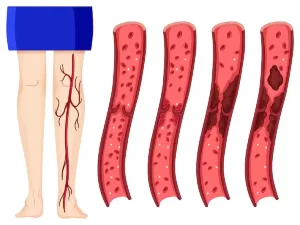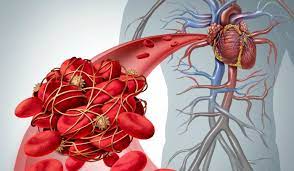
Deep Vein Thrombosis (DVT)
There are two types of VTE: Deep Vein Thrombosis (DVT) and Pulmonary Embolism (PE). DVT occurs when a clot forms in a deep vein, usually in the legs. If a blood clot breaks off and travels to the lungs through the bloodstream, it leads to a serious complication called Pulmonary embolism. It can be fatal if the clot is large and blocks blood flow to the lungs.
Factors that can increase risk of developing blood clots
While anyone can have venous thromboembolism, some people have higher chances of having this condition. Below are certain factors that can make you more prone to developing blood clots, as stated by the US CDC:
Injury to a vein: This may result from fractures, severe muscle injury or major surgery.
Slow blood flow: Reduced blood flow due to limited movement, sitting for a long time, confinement to bed due to a medical condition or paralysis may increase risk of formation of blood clots in the body.
Increased estrogen levels: This could be due to use of birth control pills, hormone replacement therapy, or pregnancy.
Age: The risk of have venous thromboembolism increases as you get older.
Obesity: Being obese also makes you more susceptible to blood clot formation.
Other factors associated Deep Vein Thrombosis include family history of venous thromboembolism, inherited clotting disorders, a catheter located in a central vein.
How to prevent formation of blood clots
The CDC advises people to follow some simple tips to prevent formation of blood clots. It says:
If you have been confined to bed following a surgery or due to illness or injury, try to get up and move around as soon as possible.
Avoid sitting for long periods of time. During long hours of travels, make sure to get up and walk around every 1 to 2 hours.
While you’re sitting, you can do some leg exercises too. Try this one, keep your toes on the floor and practise raising and lowering your heels. Or raise and lower your toes while keeping your heels on the floor.
Maintaining a healthy weight and living an active lifestyle are the keys to avoiding venous thromboembolism. If you have any of these risk factors, consult a doctor on how to prevent blood clots.
Source: Longjam Dineshwori








